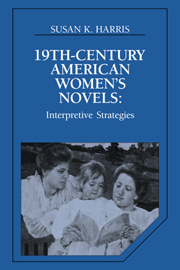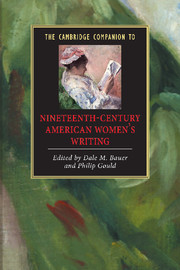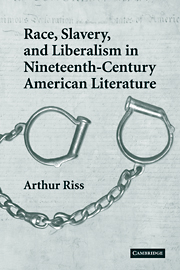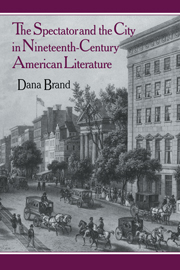Nineteenth-Century American Women's Novels
Interpretative Strategies
$54.99 (P)
Part of Cambridge Studies in American Literature and Culture
- Author: Susan K. Harris
- Date Published: March 1992
- availability: Available
- format: Paperback
- isbn: 9780521428705
$
54.99
(P)
Paperback
Looking for an examination copy?
This title is not currently available for examination. However, if you are interested in the title for your course we can consider offering an examination copy. To register your interest please contact [email protected] providing details of the course you are teaching.
-
This study proposes interpretive strategies for nineteenth-century American women's novels. Harris contends that women in the nineteenth century read subversively, 'processing texts according to gender based imperatives'. Beginning with Susannah Rowson's best-selling seduction novel Charlotte Temple (1791), and ending with Willa Cather's O Pioneers! (1913), Harris scans white, middle-class women's writing throughout the nineteenth century. In the process she both explores reading behaviour and formulates a literary history for mainstream nineteenth-century American women's fiction. Through most of the twentieth century, women's novels of the earlier period have been denigrated as conventional, sentimental, and overwritten. Harris shows that these conditions are actually narrative strategies, rooted in cultural imperatives and, paradoxically, integral to the later development of women's texts that call for women's independence. Working with actual women's diaries and letters, Harris first shows what contemporary women sought from the books they read. She then applies these reading strategies to the most popular novels of the period, proving that even the most apparently retrograde demonstrate their heroines' abilities to create and control areas culturally defined as male.
Customer reviews
Not yet reviewed
Be the first to review
Review was not posted due to profanity
×Product details
- Date Published: March 1992
- format: Paperback
- isbn: 9780521428705
- length: 256 pages
- dimensions: 229 x 152 x 15 mm
- weight: 0.38kg
- availability: Available
Table of Contents
Acknowledgments
Part I. Introduction: Part II. Narrative Designs and Textual Rebellions:
1. Preludes: the early didactic novel: Narrative control in Charlotte Temple and A New-England Tale
2. Introduction to the exploratory text: subversions of the narrative design in St Elmo
3. Decoding the exploratory text: subversions of the narrative design in Queechy
Part III. Narrative Rebellions and Textual Designs:
4. Inscribing and defining: the many voices of Fanny Fern's Ruth Hall
5. Extending and subverting: the iconography of houses in The Deserted Wife
6. Projecting the 'I'/conoclast: first-person narration in The Morgesons
Part IV. The Later Didactic Novel:
7. Narrative control and thematic radicalism in work and The Silent Partner
Part V. Conclusions and Implications:
8. Anomalies and anxieties: The Story of Avis, A Country Doctor, The Awakening, O Pioneers!
Notes
General index Index to diaries, letters and reviews
Index to literary and historical references.
Sorry, this resource is locked
Please register or sign in to request access. If you are having problems accessing these resources please email [email protected]
Register Sign in» Proceed
You are now leaving the Cambridge University Press website. Your eBook purchase and download will be completed by our partner www.ebooks.com. Please see the permission section of the www.ebooks.com catalogue page for details of the print & copy limits on our eBooks.
Continue ×Are you sure you want to delete your account?
This cannot be undone.
Thank you for your feedback which will help us improve our service.
If you requested a response, we will make sure to get back to you shortly.
×








